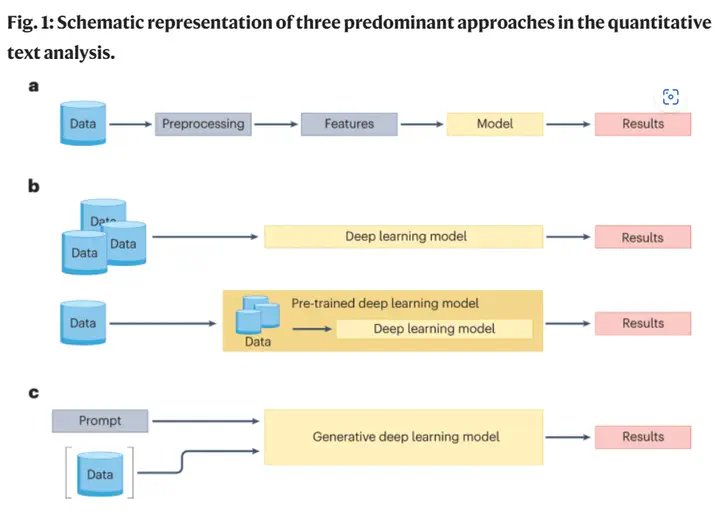
Abstract
Text analysis has undergone substantial evolution since its inception, moving from manual qualitative assessments to sophisticated quantitative and computational methods. Beginning in the late twentieth century, a surge in the utilization of computational techniques reshaped the landscape of text analysis, catalysed by advances in computational power and database technologies. Researchers in various fields, from history to medicine, are now using quantitative methodologies, particularly machine learning, to extract insights from massive textual data sets. This transformation can be described in three discernible methodological stages: feature-based models, representation learning models and generative models. Although sequential, these stages are complementary, each addressing analytical challenges in the text analysis. The progression from feature-based models that require manual feature engineering to contemporary generative models, such as GPT-4 and Llama2, signifies a change in the workflow, scale and computational infrastructure of the quantitative text analysis. This Primer presents a detailed introduction of some of these developments, offering insights into the methods, principles and applications pertinent to researchers embarking on the quantitative text analysis, especially within the field of machine learning.